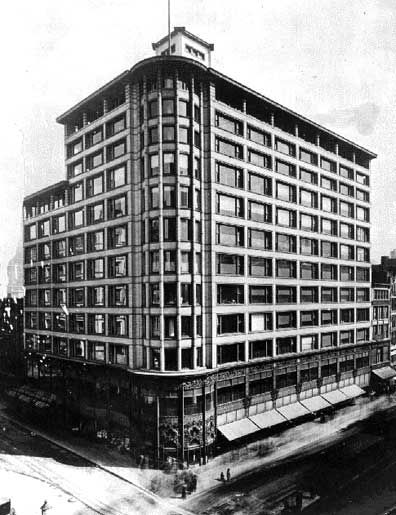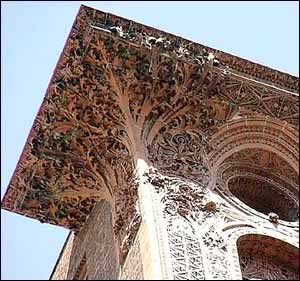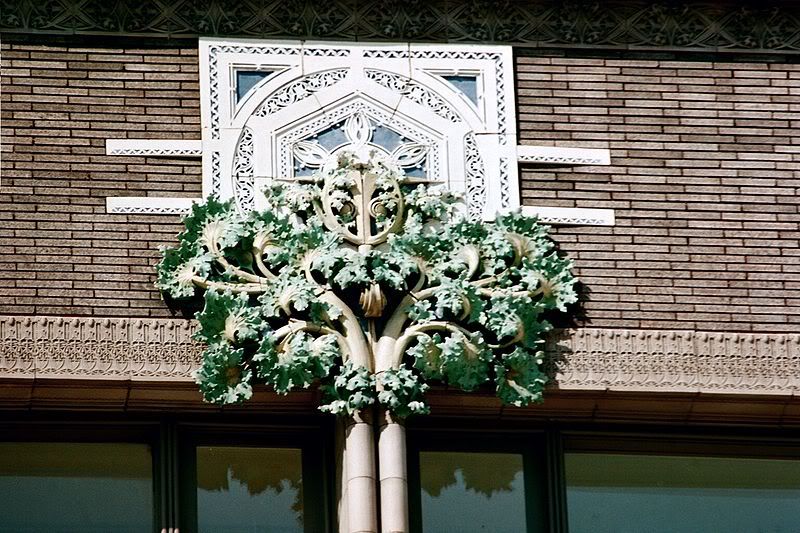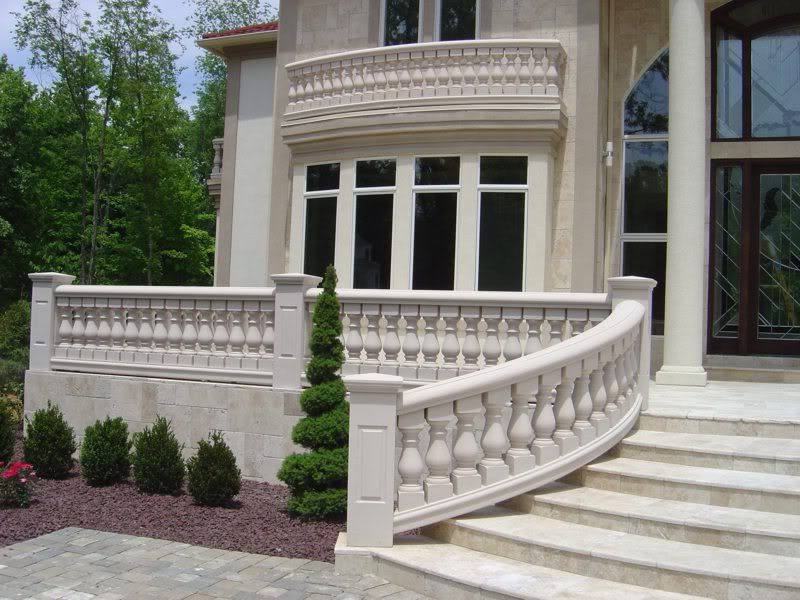This project was very interesting because I primarily observed my sculpture through an art history lens because thats is what I was used to after taking an art history class in high school. After I started looking at it for rhetorical appeals, many new aspects showed up to reveal why this piece that looked like a fence to me would possibly be considered art and be put in a sculpture garden. I could not figure out many of the rhetorical aspects I was coming up with such as why the sculpture was considered an art piece when it obviously was created to be a stairway baluster as the title suggests. After researching the architect behind the sculpture and strange history associated with his particular buildings and architectural pieces and how rare they are today. With this knowledge, I began to respect my piece more and more and things started making more sense such as these balusters being donated to the university rather sitting in front of a building actually being used as balusters. I decided to write a love letter just to have some fun with the last project, attempting to be creative while expressing my sincere impression and admiration for the balusters. There will be some outlandish things that I purposely put in there to evoke a humorous pathos.
The final draft of my essay changed drastically again, specifically to fit the criteria of having to read it to the class while still making a rhetorical argument. I fixed several of the sentences throughout my essay because they were awkwardly worded especially when I was reading it aloud and had to be fixed to make the letter more fluent. I fixed my contractions throughout the essay as well because it is more readable and sounds better when read aloud. First, I cut a sentence from my historical background paragraph and utilized it as the opening paragraph for my organic line paragraph because it seemed more appropriate because it connected another paragraph historically to the creator and shortened the history, focusing more on the rhetorical appeals. Again, in the historical background section I completely erased a sentence about the piece turning into an artistic piece rather from a fictional piece. This sentence seemed very random for the historical paragraph and that particular piece of information would be touched upon in another paragraph. I switched my placement and organic line paragraphs because line seemed like a more important rhetorical appeal than placement. Also talking about how the line helps make the piece look natural and blend into the place that it sits seems like it could be a nice transition between paragraphs because the reader would know how the two elements work together to create a calming pathos. In my placement paragraph, I switched the positions of the first two sentences because the third sentence had a more general subject and the second one narrow down the argument a little more, so it would be more appropriate to switch them. I separated my now concluding paragraph from my organic line paragraph because they both seemed run on and a formal conclusion would end the letter cheesily, just the way it was meant to be.
First Draft
Statement of Purpose
Final Draft

Dearest Stairway Balusters,
I can no longer hide my true feelings of impression and admiration for you. When I first laid eyes on you, I knew you would be my sculpture with your resonating motifs reminding of the sweet agony that was art history. At first glance, you seemed more like a fence placed in the corner hiding your odd design, being a functional piece being used as a piece of art. Too close to the ground for the designs in the interior to be appreciated and further studied, I wondered why you might even be considered a sculpture at all because quite frankly, you resemble a weathered fence that had no other place to go. It seemed even the university sought to hide you low on a concrete wall, behind the overgrown foliage and shade of the looming tree. Alas, the more time I spent outdoors with you only made me appreciate your presence for what it truly was; a decorative ornament with enough calming qualities to make a casual passerby feel comfortable in the outdoors. Manmade married with natural motifs, you work to bring together these two aspects to ease, for example a student, into the natural world when they are surrounded by the hustle and bustle of a city and university. What I'm trying to say is, you make life easier for anyone struggling and they find themselves in your particular niche of the sculpture gardens. You create a relaxing ambiance due to the logos of your aesthetic arrangement and organic design invoke a calming pathos adding to the serenity of the sculpture garden.
Tragedy darkens your past, but helped me further understand you and what you
 r creator, Louis Sullivan, attempted to do with your design. Rather I found out that many other architectural pieces done by Sullivan were destroyed after World War II and only a few rare pieces survived destruction. Miraculously, you were saved from the front of the department store you adorned and were given to the Institute of Art in Chicago, until you were eventually donated to your present home at the university. Therefore, you are a rare piece of history gracing the university for the education and appreciation of the students. The fact that you represent such a successful man that is still considered the father of modernism and inventor of the skyscraper, makes you a historical ambassador for the students coming to study.
r creator, Louis Sullivan, attempted to do with your design. Rather I found out that many other architectural pieces done by Sullivan were destroyed after World War II and only a few rare pieces survived destruction. Miraculously, you were saved from the front of the department store you adorned and were given to the Institute of Art in Chicago, until you were eventually donated to your present home at the university. Therefore, you are a rare piece of history gracing the university for the education and appreciation of the students. The fact that you represent such a successful man that is still considered the father of modernism and inventor of the skyscraper, makes you a historical ambassador for the students coming to study.
My interest was sparked when I began to realize that you were not simply a fence but were mounted and placed on a concrete wall for a particular reason. You had strictly been transformed into an art piece rather than the functional piece you were created to be for the department store you originally stayed. The way in which you were arranged was interesting because the gap between each separate baluster was spaced strangely. Too far apart to be used as a functional piece because a person would be able to fall through or harm themselves if you were actually used as a fence or as balusters. The balusters had been arranged to frame the concrete behind it, giving the piece more texture enforcing the fact that you are being used as a functional piece. Your balusters are framed by metal that was not originally part of the work and concentrates more on what is being framed, which shows the intention to be used and seen as a piece of art. The frame focuses the attention on your balusters, though it plays an important role in connecting the architectural pieces to the world of art.
The intertwining, organic designs on your shaft were a signature of Sullivan in helping him reflect the interior of a bu ilding, paradoxically, in a humanistic natural way. Organic line, whether intentional or not, plays another huge part in the calming artistic appeal. This type of line also the primary line found in nature. Your structure as a whole has no geometric or sharp lines, providing an artistic element that is easy on the eyes of whomever look upon your beauty evoking the peaceful pathos. Initially the organic line used in your “outline” invites a casual observer to move their eye inward to the true motif of your body, revealing the artistry of your former functionality. Intertwining vines dominant your surface with a few oval shaped disks, resembling those found on family crests alluding to the prestige of the department store you once stood in front. Organic line conquering the design on your surface is simplistic and “toned down,” creating an earthy feel. Earthy in the way that you somehow belong to the space you inhabit, with almost every aspect of you being a subtle beauty shyly flirting with nature. The natural motifs show the inspiration of your creator, showing the natural beauty even on them manmade. Resonating motifs invading almost the entire baluster connects your cast iron with foliage surrounding you.
ilding, paradoxically, in a humanistic natural way. Organic line, whether intentional or not, plays another huge part in the calming artistic appeal. This type of line also the primary line found in nature. Your structure as a whole has no geometric or sharp lines, providing an artistic element that is easy on the eyes of whomever look upon your beauty evoking the peaceful pathos. Initially the organic line used in your “outline” invites a casual observer to move their eye inward to the true motif of your body, revealing the artistry of your former functionality. Intertwining vines dominant your surface with a few oval shaped disks, resembling those found on family crests alluding to the prestige of the department store you once stood in front. Organic line conquering the design on your surface is simplistic and “toned down,” creating an earthy feel. Earthy in the way that you somehow belong to the space you inhabit, with almost every aspect of you being a subtle beauty shyly flirting with nature. The natural motifs show the inspiration of your creator, showing the natural beauty even on them manmade. Resonating motifs invading almost the entire baluster connects your cast iron with foliage surrounding you.
Placement is key in the logos of the relaxing atmosphere that you give off in the garden. You are a piece of art that does not push yourself on the minds of people, rather you let them see and appreciate you on their own terms because you seem to be perfectly at home amongst the foliage. You do not sit in the line of sight of a person and are tucked in the corner and hidden behind the bushes and shade, but all for a clever reason. Something I find quite endearing, especially since they would most likely come to this quaint place to study or enjoy a peaceful lunch. You lie at a level that many would never take much notice until they sit down on a bench that would be in the vicinity. Like a panther you hide in the shadows, until someone casts a sideways glance and notices the artistry hidden by the shadow and positioning.
Imitating nature in an artificial way you connect the viewer to nature by falsely sep arating them, giving a sense of security to people who are more likely than not used to nature. With every part of you toned down, creating a feeling of serenity while next to you, the sculpture garden has been graced by your placement. Cast by man, but playing the part of a natural piece, withstanding the elements much like the plants sheltering you. Every aspect of you helps create a peaceful aura along with the bushes and flowering trees, prompting a calm state of mind for people that need to relieve some stress from their high speed lives. I have spent so much time with you, but have not revealed my devotion to you until now.....well imitation is the highest form of flattery, so to prove my love to you I will strike the most graceful baluster pose I have ever struck. I hope you like it!
arating them, giving a sense of security to people who are more likely than not used to nature. With every part of you toned down, creating a feeling of serenity while next to you, the sculpture garden has been graced by your placement. Cast by man, but playing the part of a natural piece, withstanding the elements much like the plants sheltering you. Every aspect of you helps create a peaceful aura along with the bushes and flowering trees, prompting a calm state of mind for people that need to relieve some stress from their high speed lives. I have spent so much time with you, but have not revealed my devotion to you until now.....well imitation is the highest form of flattery, so to prove my love to you I will strike the most graceful baluster pose I have ever struck. I hope you like it!
XOXO,
Erin Ray

